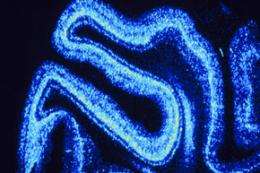Looking at the micro could mend broken hearts

(Medical Xpress) -- Researchers have completed the first comprehensive survey of the tiny cellular molecules found in the heart and which are essential for its healthy function. The breakthrough could lead to the development of targeted therapeutic treatments for heart disease.
Professor Thomas Preiss and Dr. Jennifer Clancy and their team commenced the research at Sydney’s Victor Chang Cardiac Research Institute in 2008 and completed it at The John Curtin School of Medical Research at ANU. They used the latest sequencing technology to capture and identify thousands of microRNAs found in the cells of the heart.
MicroRNAs are short ribonucleic acid molecules, which in turn are one of three building blocks of all life. Even though they are tiny molecules, microRNAs are abundant in cells and act like an army of ants – individually making small changes to the expression of many genes, but in combination resulting in large changes to the cell. When these molecules are deregulated, or ‘not co-ordinating their efforts’, they can cause disease.
Professor Preiss said that microRNAs are important regulators influencing which genes get used in each cell and that every cell type has its own particular suite of microRNAs that enable specific cellular functions.
“This suite of microRNAs changes during heart disease and microRNA-based therapies aim to revert a cell to its former function by resetting microRNA levels,” she said.
“A number of these therapies are already in pre-clinical development. However, the knowledge of which microRNAs were present in the heart and what they actually looked like may not be good enough for the development of appropriate therapies.
“That’s why we conducted this survey. Using next-generation sequencing technology, we were able to visually identify tens of thousands of heart microRNAs and describe them fully.
“We found that many of the microRNAs in the heart take on different forms than in other tissues and that a number of the microRNAs being considered and tested as therapies were different to what was previously thought.”
Professor Preiss added that the team’s first complete survey of the various types of microRNAs found in heart cells will better inform the development of medical therapies which could treat heart disease.
“MicroRNAs are already known to be deregulated in heart disease and efforts are being made to use microRNAs as a drug or drug target in treating heart disease. What we added to this is new information on the precise sequence variants of microRNAs that exist in the heart, which are not always the ones expected. Our cardiac microRNA compendium can now be a reference for design of microRNA-based therapeutic agents in the heart and for future research about how microRNAs are involved in heart function.
“We aim to expand this work to make a similar compendium of microRNAs in diseased hearts where therapeutic intervention is more likely to be applied,” he said.
The research has been published in the journal PLoS ONE and is available online.















